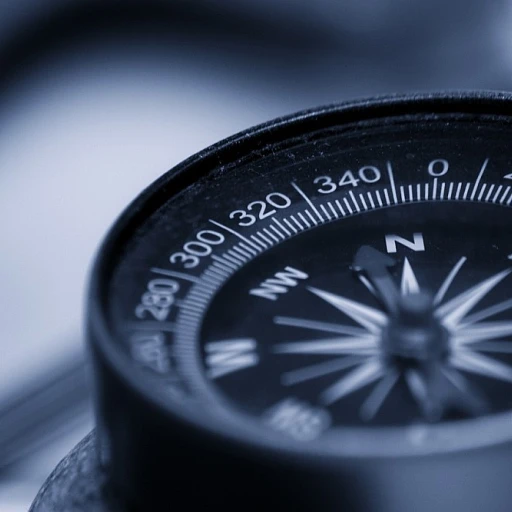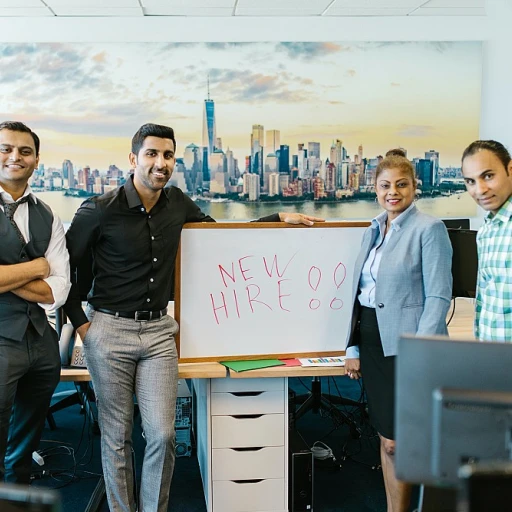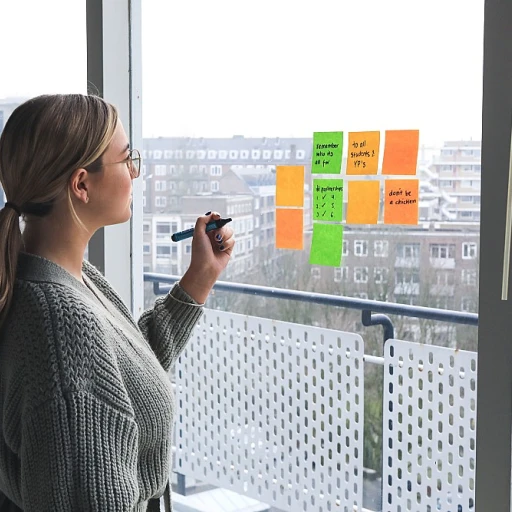
Understanding AI in Employee Monitoring
The Magic Behind AI Monitoring
Picture this: AI is out there in the workplace, doing its thing. It's like that colleague who just knows everything, without ever showing off. The idea of employee monitoring using AI might sound a bit Big Brother-ish, but stick around as we unravel what it's truly about. Made to simplify how employers keep track of stuff, AI doesn't just keep tabs; it's evolving to become the overachiever in the corner office. AI takes a sneaky peek at employee performance, gathering data and tossing any red flags. Yet, it's not just about spying on workers. AI helps monitoring workplace productivity by providing employers tools that smooth out the bumps. It ‘learns’ as it goes, thanks to machine learning, ensuring performance evaluations are accurate. Let's face it, nobody's a fan of feeling inappropriately watched. A balance is key, right? AI is stepping up, revealing surveillance systems that respect privacy thanks to precise monitoring tools.What are the ingredients that make AI tick? Well, there are technologies that translate AI from geek-speak to workplace whiz.
- Real-time analysis: Keep it snappy. AI in monitoring tools is like a sports commentator, offering quick insights whenever a situation arises, ensuring employee performance is in check.
- Natural language processing (NLP): This tech picks up on communication, putting company data at the forefront to enhance productivity and decision-making.
Key Technologies Driving AI Monitoring
Tech That Powers AI Monitoring Systems
The backbone of AI monitoring is a fascinating blend of advanced tech that has transformed the modern workspace. These innovations have become a game-changer for businesses eager to optimize productivity while keeping ethical considerations in check.
Artificial intelligence and machine learning are at the forefront, enabling systems to sift through vast datasets. AI can spot patterns that a human might miss, providing invaluable insights into workforce behavior and performance evaluations. Some stand-out technologies include:
- Machine Learning Algorithms: These algorithms quietly learn from data to deliver valuable feedback about employee performance.
- Real-time Analysis: AI doesn't waste time—analyzing employee actions instantly to identify patterns or concerns, allowing employers to monitor workplace efficiency with ease.
- Computer Vision: This technology, often recognized by its connection to surveillance systems, has entered the employee monitoring arena, analyzing visual data from cameras or screens to offer insights into worker engagement.
- NLP (Natural Language Processing): By processing and understanding human language, NLP tools can be used to monitor digital communication channels within a company, ensuring team interactions maintain a healthy balance.
But enough of the tech talk! What's more intriguing is how companies integrate these technologies into their operations, often leading to the classic balance challenge of managing productivity and personal data privacy efficiently.
Stay tuned for some real-world applications and stories of companies who've mastered this balancing act. Understanding these technologies isn't just about watching—it’s about adding genuine value to the workplace atmosphere, while maintaining privacy boundaries.
Also, if you're deeply interested in strengthening the employee connection with AI, find out more about this transformative approach by taking a peek at this article.
Balancing Productivity and Privacy
Striking the Right Balance: Productivity vs. Privacy
Balancing productivity and privacy when employing artificial intelligence (AI) for monitoring workers is a hot button issue, as both employers and employees grapple with how much is too much surveillance. As businesses place increasing emphasis on performance evaluations and boosting productivity, questions surrounding data privacy and employee welfare grow louder. For a company, finding that sweet spot between keeping an eye on employee performance and respecting their personal space can be tricky. But AI offers new hope by making it possible to monitor workers in a way that respects their individuality and privacy while maximizing efficiency. By processing real-time data, AI tools can alert employers to red flags without feeling like employees are being inappropriately watched. While technology can indeed improve productivity in the workplace, it runs the risk of causing employees to feel inappropriately surveilled if not handled with care. The need for transparency cannot be overstated. Employees should be made aware of how, why, and when they're being monitored. This transparency can help reduce anxiety and build trust, fostering a more positive work environment. In some cases, monitoring software specifically designed to help employers understand workers' behaviors can turn into a surveillance system that feels intrusive, if not managed properly. It becomes essential to ensure practices do not cross from being informative to oppressive. Overly aggressive or continuous monitoring might have a detrimental effect on performance and morale. Employers have been told by platforms like CNBC to focus on using data to assist decision making, enabling them to provide support rather than oversight. Monitoring tools can be set up to help both employees and employers by optimizing workflows, enhancing productivity, and sharpening focus on important tasks. The business community is slowly understanding the nuances of balancing these competing interests. According to a report by Pew Center, while AI can certainly play a role in keeping productivity levels high, there is always a concern that data might be used inappropriately, leading to a tense workplace atmosphere. In using AI, companies must create a culture of open communication and consent. Monitoring workplace tools need not be perceived as an intruder but rather as a partner in maintaining a harmonious and productive environment. Curious how AI is influencing workplace dynamics further? Explore how AI boosts employee recognition and engagement to get a more comprehensive picture of how AI is shaping modern business practices.AI Tools for Enhancing Workplace Productivity
Pushing the Needle on Workplace Productivity with AI Monitoring
In the bustling workplace, ensuring productivity is more vital now than ever. Advances in artificial intelligence offer shiny new tools that can transform how companies monitor and improve employee performance. From collecting real-time data to offering valuable insights, AI monitoring software isn't just a fancy trend; it’s a game-changer for tracking employee productivity. AI tools help employers in scanning through vast amounts of data to locate red flags associated with underperformance or excessive surveillance. Imagine software that keeps an eye on workers without becoming too intrusive. It gives employers the edge needed to boost productivity without making employees feel inappropriately watched. These systems use sophisticated algorithms and various monitoring tools to pick up and process information that can be critical in decision making. Tools like Microsoft Workplace Analytics provide employers with snapshots of how work gets done, revealing areas for improvement in surprising ways. Monitoring the workplace effectively involves more than just keeping track. It's about understanding and utilizing productivity patterns. Employers see value in AI not only for performance evaluations but also for giving workers feedback they can use to improve. Software equipped with AI capabilities offers insights—granted through data visualization or by highlighting trends—that are meaningful. But there's a line that shouldn't be crossed. It's easy for monitoring systems to become surveillance monsters, so companies need to maintain a delicate balance. Engage employees in regular feedback loops, ensuring they don’t feel like they're under the thumb of big brother watching every move. To make the most of AI tools for enhancing workplace productivity, it's essential to employ the right software. These might include tools capable of integrating effortlessly with existing systems, adaptable enough to meet specific company needs, while not crossing the data privacy boundary. While AI in employee monitoring seems like more than just news, the real magic lies in how effectively these technologies improve productivity and employee engagement. The promise of AI workplace tools sounds great, but it's the real-world application without losing sight of people that decides its success. Equip your business with AI to stir productivity, but always keep a human touch in view. Always keep those CNN headlines in mind, forewarning that too much tech can cause more harm than good.Compliance and Legal Implications
Ensuring Compliance When Monitoring Employees with AI
Balancing productivity and privacy often brings the compliance and legal implications of AI monitoring into focus. Employers want to ensure a productive workplace and, at the same time, respect the privacy rights of their employees. The integration of modern technology into the monitoring process must consider existing laws and marshalling them thoughtfully. HTML5 technologies and AI-driven monitoring software provide solutions that revolutionize how companies monitor employees in real time. However, countries often have different data protection laws addressing how information should be collected, processed, and stored. For instance, the General Data Protection Regulation (GDPR) in the European Union sets a high bar for monitoring activities, requiring explicit consent before capturing any personal details or professional performance metrics. In the US, various regulations apply in different states, often highlighting the importance of clear surveillance practices. Employers need to ensure they are updated on applicable rules, as breaches can cause serious implications not just on a legal front but also affect employee morale.- Data Privacy: Organizations need to foster trust by being transparent on how they use monitoring technologies. Surveys might be helpful, and the Pew Research Center gives insights into what people currently feel about being watched at work. Firms then deploy this feedback, to decide how closely they monitor workers.
- Surveillance Systems: Implementing real-time surveillance systems without oversight can make employees feel like they’re being inappropriately watched. It's crucial to use this data judiciously and ensure these systems are safe and reliable.
- Performance Evaluations: While AI collects wide-ranging data, it’s fundamental to ensure workers understand how this aids their performance evaluations. Being too intrusive can raise employee concerns about data privacy and misuse.












